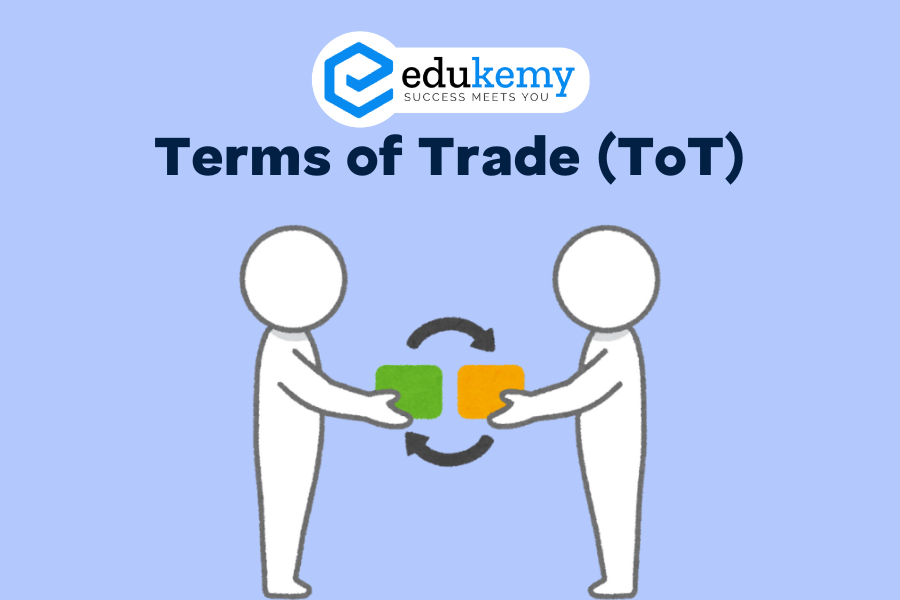
Terms of Trade (ToT) represent the relative value of a country’s exports compared to its imports, providing a crucial indicator of its economic health and international trade dynamics. This concept holds significant importance in understanding the economic well-being and competitiveness of nations in the global marketplace. Essentially, ToT reflect the quantity of imports a country can acquire for a given quantity of exports. When a nation’s ToT improve, it can purchase more imports with the same volume of exports, thereby enhancing its purchasing power and potentially stimulating economic growth. Conversely, a decline in ToT may indicate challenges such as decreased export prices or increased import costs, which could strain a country’s economy. Understanding the factors influencing ToT is vital for policymakers, economists, and businesses to formulate effective trade strategies and assess a nation’s economic performance within the broader international context.
Contents
Terms of Trade (ToT):
- Definition and Importance:
- Terms of Trade (ToT) gauge the relative profitability of agriculture compared to other economic sectors.
- It’s determined by assessing the change in input costs against the change in output prices for agriculture.
- Factors Influencing ToT:
- ToT’s favorable conditions are crucial for investment, capital formation, food security, livelihood security, and sustainable farming.
- Globalization in India since 1991, FDI in food processing, e-commerce, improved seed technology, and rural infrastructure development (e.g., PMGSY) contribute to favorable ToT.
- The Commission for Agricultural Costs and Prices (CACP) considers ToT as a criterion for recommending Minimum Support Prices (MSP).
- Agricultural Income Taxation:
- Taxation of agricultural income falls under the State List, leading to divided opinions.
- Proponents argue it adds to budgetary receipts, aids capital formation in agriculture, adheres to fiscal equity principles, and targets wealthy agriculturists.
- Opponents express concerns about potential capital flight, negative impacts on food security, and argue that existing restrictions on agricultural prices implicitly serve as a form of tax.
- Agricultural Subsidies in India:
- The government provides various subsidies to Indian agriculture:
- Food Subsidy: Incurred by the Union Government, it involves buying from farmers at remunerative prices and selling to consumers at affordable rates. Selective introduction of Direct Benefit Transfer (DBT) can enhance rationalization.
- Fertilizer Subsidy: Aims at providing chemical fertilizers to small and marginal farmers at affordable rates. The government pays a set price to fertilizer companies, and the subsidy amounted to about ₹80,000 crore in 2019-20.
- Credit Subsidy: Government provides rural credit at subsidized rates through banks and occasionally writes off loans for distressed farmers.
- Electricity Subsidy: States subsidize electricity, which can lead to wastage, inefficient use, fiscal pressures, and Non-Performing Assets (NPAs) for banks.
- The government provides various subsidies to Indian agriculture:
- Challenges Associated with Agricultural Subsidies:
- Challenges include rationalizing subsidies for infrastructure investment, improving targeting, and selectively substituting subsidies with Direct Benefit Transfers (DBTs).
In summary, Terms of Trade, taxation of agricultural income, and agricultural subsidies collectively shape the economic landscape of agriculture in India. These elements are integral to ensuring the sustainability and prosperity of the agricultural sector.
FAQs
1. What are Terms of Trade (ToT)?
Terms of Trade (ToT) refer to the ratio of export prices to import prices. It measures the purchasing power of a country’s exports in relation to its imports. If a country’s ToT increase, it means its export prices are rising faster than its import prices, indicating a favorable trading position.
2. Why are Terms of Trade important?
Terms of Trade are crucial because they determine the relative strength of a country’s trade position. A favorable ToT indicates that a country can buy more imports with a given quantity of exports, improving its standard of living. Conversely, a decline in ToT may lead to decreased purchasing power and economic challenges.
3. What factors influence Terms of Trade?
Several factors can impact a country’s Terms of Trade, including changes in export and import prices, exchange rates, productivity levels, and shifts in global demand and supply dynamics. Domestic policies, such as trade agreements and tariffs, also play a significant role in shaping ToT.
4. How do Terms of Trade affect economic policy?
Terms of Trade influence economic policy decisions, particularly in trade and exchange rate policies. A country experiencing a decline in ToT may implement measures to boost export competitiveness or reduce reliance on imports. Governments may also adjust monetary and fiscal policies to mitigate adverse effects on economic growth and stability.
5. Can Terms of Trade be improved?
Yes, countries can take various measures to improve their Terms of Trade. This includes investing in technology and infrastructure to enhance productivity, diversifying export markets and products, negotiating favorable trade agreements, reducing trade barriers, and implementing sound macroeconomic policies to maintain stability and competitiveness in the global market.
In case you still have your doubts, contact us on 9811333901.
For UPSC Prelims Resources, Click here
For Daily Updates and Study Material:
Join our Telegram Channel – Edukemy for IAS
- 1. Learn through Videos – here
- 2. Be Exam Ready by Practicing Daily MCQs – here
- 3. Daily Newsletter – Get all your Current Affairs Covered – here
- 4. Mains Answer Writing Practice – here

